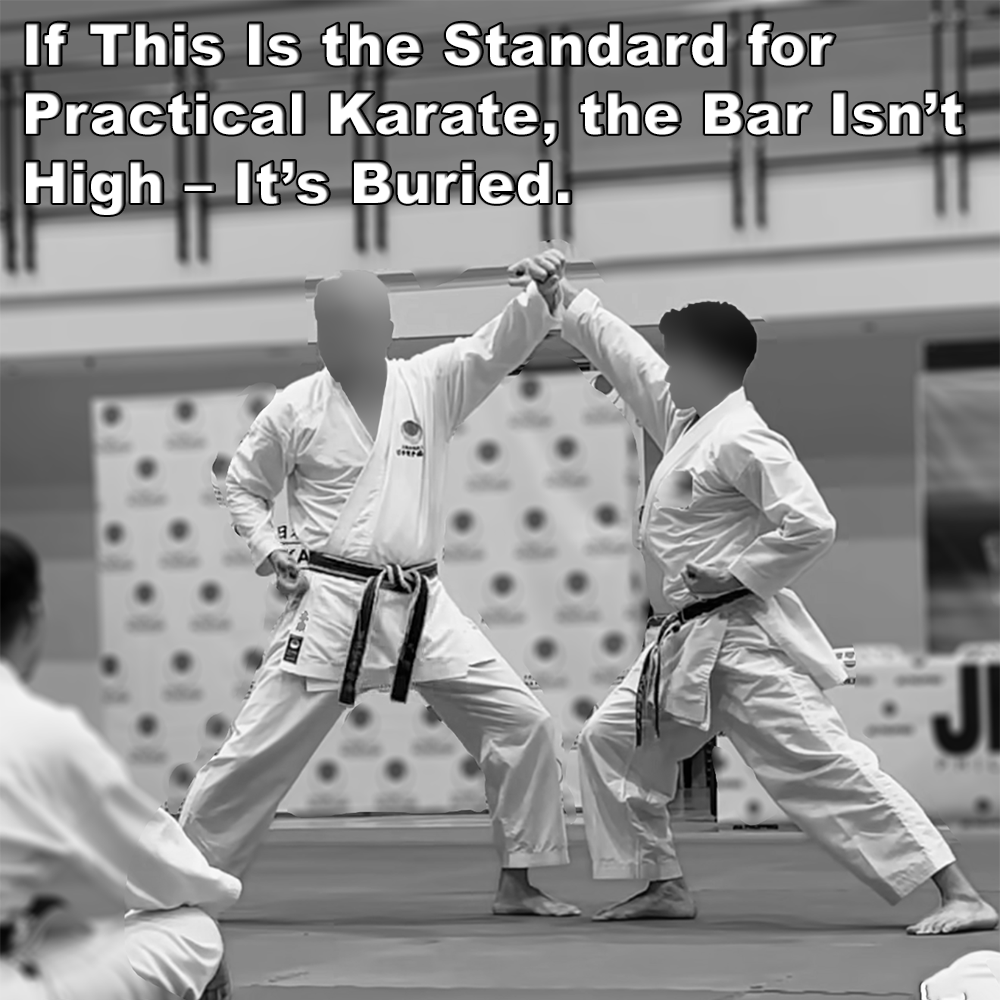
(Approx 1 minute 55 second read)
A friend of mine recently sent me a video of a JKA Shotokan Dan test weekend seminar, taught by a senior JKA instructor. And guess what, five step-kumite was being practiced and taught.
.
Now, I have written about step-kumite extensively, and in my opinion, if you need reminding, it only has value when you’re practicing step-kumite.
.
It’s amazing the amount of comments and dogma I receive on this subject – though I shouldn’t be surprised.
.
The rhetoric is always the same: it’s great for beginners, it lets someone feel what it’s like to be attacked, it helps a learner understand timing and distance, and more.
.
The same phrases repeated over and over, and over, and……… well, you get the idea.
.
When you become proficient at step-kumite, it looks good when people are watching: the loud kiai, the locked stances, the sharp kime, the blocking of a stepping straight punch launched from many feet away.
.
But let’s not sugar coat it, it has no connection to reality. Do you think we can agree on that?
.
I’m going to ignore most of the reasons people give for performing them, except this one. It is a progressive exercise drill. It’s a place to start and move on from once experience is gained.
.
See where I’m going with this?
.
It was a Dan testing weekend. All in attendance were mainly shodan and above.
.
So for all the naysayers out there… do I need to say more?
.
Here’s the truth. If you’re still teaching step-kumite at Dan grade, you’re not teaching people how to fight, you’re teaching them how to look good. You’re preserving choreography, not passing on combative knowledge.
.
Kata gives us the blueprint. HAPV-based drills, paired kata study, controlled resistance, pressure testing, these are what develop real timing, distancing, and the ability to handle chaos. Step-kumite avoids chaos entirely, and that’s why people love it. It feels safe.
.
My writing and teaching is always in the context of self-protection first. Those who follow my page regularly have probably guessed that by now. For newcomers, it even says so at the top of the page: karate should work in this context – reality. Karate was created for self-defense, and this is where I prefer to be.
.
But self-protection isn’t safe. It’s ugly, messy, and unpredictable. And that’s exactly what training should prepare you for.
.
So I’ll leave you with this: if you think step-kumite is preparing you for violence, ask yourself, are you training to survive, or are you training to perform? Because at Dan grade, if five step-kumite is still the standard, then the bar isn’t just low – it’s buried six foot under. Keep pretending step-kumite prepares you, and that’s where you’ll end up.
.
.
Written by Adam Carter – Shuri Dojo
